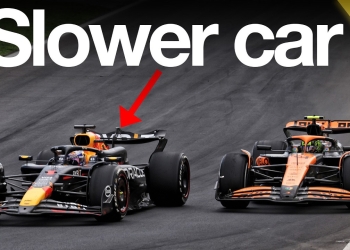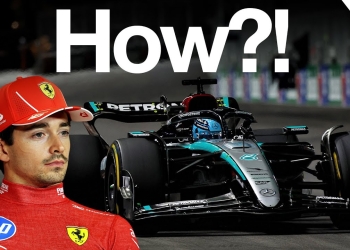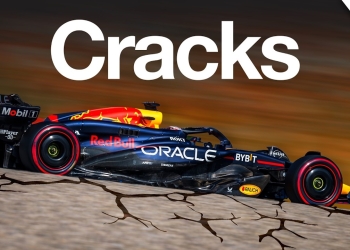McLaren's Controversial Aerodynamic Trick: A Game-Changer in F1
In the high-stakes world of Formula 1, where milliseconds can make or break a race, teams are constantly pushing the boundaries of engineering and aerodynamics. McLaren's recent surge to the front of the pack has left rivals scratching their heads and crying foul over a controversial aerodynamic trick.
The bone of contention? A front wing that seems to have a mind of its own, bending like a contortionist under high speeds and snapping back to attention when the brakes are applied. It's a feat of engineering wizardry that's got Red Bull and Ferrari hot under the collar.
The Flexing Front Wing: A Balancing Act
McLaren's flexible front wing is not just a party trick. It's a carefully orchestrated dance between aerodynamics and physics. At high speeds, the wing bends into a low-drag form, slicing through the air like a hot knife through butter. But when it's time to slow down for a corner, it springs back to its original shape, providing the downforce needed to hug the track.
This clever bit of kit helps solve a pesky problem that's been giving F1 engineers nightmares: balancing slow-speed understeer with high-speed oversteer. It's like trying to pat your head and rub your belly at the same time - tricky, but not impossible if you've got the right moves.
The Rivals' Reaction: Sour Grapes or Valid Concerns?
Red Bull's Christian Horner, never one to mince words, has been quick to point out that McLaren and Mercedes' front wings are "very, very different" from the rest of the grid. Ferrari's Fred Vasseur has also chimed in, promising to have a chat with the FIA about the issue.
Click here to preview your posts with PRO themes ››
But let's not forget, both Red Bull and Ferrari have been on the other side of this fence before. Remember the flexible front wing saga of the early 2010s? Pepperidge Farm remembers, and so does the FIA.
The FIA's Stance: Keeping Everyone Honest
The FIA, for its part, is playing it cool. They've been measuring front wing deformation on track more closely since the Belgian Grand Prix, using fancy cameras to catch any sneaky bending. So far, they've given McLaren and Mercedes the all-clear, saying their wings are playing by the 2024 rulebook.
But here's the kicker: the FIA admits that completely rigid bodywork parts are about as realistic as a unicorn riding a rainbow. There's got to be some give, or we'd be seeing wings flying off cars faster than you can say "debris on the track."
The Future: Adapt or Protest?
So, what's a rival team to do? They could lodge a protest, but that's a bit like throwing spaghetti at the wall and hoping it sticks. The stewards would have to measure flexibility against a rulebook that's about as clear as mud.
The other option? If you can't beat 'em, join 'em. Red Bull and Ferrari might need to up their game in the flexible wing department if they want to keep pace with McLaren.
The Bottom Line
In the end, this is just another chapter in the never-ending saga of F1 innovation. McLaren's flexible front wing might be controversial, but it's also a testament to the ingenuity that keeps this sport moving forward.
Click here to preview your posts with PRO themes ››
As the teams head to the next race, one thing's for sure: the battle for aerodynamic supremacy is far from over. It's a high-stakes game of engineering cat-and-mouse, and right now, McLaren's got everyone else chasing their tail.
So, buckle up, F1 fans. This season's about to get a whole lot more... flexible.
-
My love for Formula 1 started in my dad’s garage, where I spent weekends tinkering with engines. As a Bristol-born journalist, I cut my teeth at local papers before landing a gig covering F1 for a major UK outlet. Now, I’m the resident expert on all things F1, from tire strategies to team politics. When I’m not trackside, you’ll find me karting or binge-watching classic races. Read more about me and my team
View all posts









